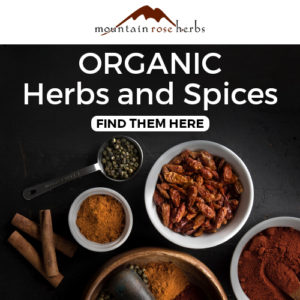The 411 on Preservatives In Pet Food

Did you know that preservatives are “hidden anti-biotics”? Think about it. Anti-biotics kill bacteria, and preservatives kill bacteria. So, for those who eat processed food—whether a human or an animal—you are constantly putting anti-biotics into your body. These chemicals will kill all bacteria in the intestinal tract, including the good flora we need for digestion and the immune system. Even after you stop anti-biotics it can take up to two years for the GI Tract to some what recover (and I say “some what” because it will never be 100% again). It’s no wonder so many people, and animals, have digestive problems.
We all know that if we take a steak out of the fridge and let it sit around it doesn’t take long before it starts to rot. Meat spoilage is caused by micro-organisms, such as, bacteria and fungi that decomposes the food until it becomes covered in surface slime, begins to discolor, releases a noxious gas and a horrible smell. All of which becomes quite poisonous for humans, but not for dogs, or cats.
But, dogs and cats are biologically equipped to deal with those micro-organisms. They are carnivores and Nature has designed them to eat the flesh of another animal (they say cats like their food to be fresh, but my Burmese will actually hide his left-overs under a throw rug to eat later. I’ve read the Mountain Lion does the same thing. He’ll make a kill, eat some while it’s fresh, and then bury the left-overs to feast on for up to ten days).
The Mountain Lion, and your dog, may be perfectly happy to eat a three-day old road kill, but a human would not be. It would make us deathly ill, so we needed to come up with a way to store foods for a period of time and still make them safe for human consumption. So, what did we do? We invented preservatives.
The preservation is done in accordance with a very simple principle, which is quite similar to what is used in allopathic medicine: we add some poison!
I am serious. All preservation chemicals are poisons. They are just selected amongst those poisons that are far worse for the micro-organisms than for us. The philosophy then is that it will kill the micro-organisms without doing too much damage to us.
Note the phrase “not too much damage”. We do not talk about “no damage”. That would be utopia. It is a matter of accepting a certain level of damage through this poisoning. Food manufacturers must generally provide proof to government that this damage is below some standards set by said government. And they have to stick to certain approved chemicals when we talk about human food.
For pet food, it is different. There are, in fact, no government regulations in place for pet food. In North America, the industry is “self-regulated”, which means “not regulated by government at all”. In Europe, the EU is making some rules for it, but these rules do not oblige a manufacturer to disclose anything but what he added himself. They actually make it illegal for him to disclose what his suppliers added! So, this protection is a joke any chemist employed by a pet food manufacturer can laugh at.
Just to illustrate how grotesque this is: a pet food manufacturer can buy “raw protein” from a rendering plant or from a feather meal plant, and request that the supplier add, let’s say, 10% of a poisonous preservative. The pet food manufacturer then adds this “raw protein” to his recipe, in an amount of 10%. This will leave a total of 1% of that preservative in the pet food manufacturer’s finished product! But he did not add this preservative! In North America, he has no obligation to disclose it. And, in Europe, it would be illegal for him to do it!
So much for honest information of consumers and for protection of their best interest. Not to mention the health of our pets…
What chemicals are added to pet food?
Adding chemicals to foods to preserve them for later consumption is no new invention. It has been done for thousands of years, starting with salt and spices. In the last 50 years, however, the number of food additives has greatly increased, due to cheap access to synthetic chemicals. There is a total of 9,000 recognized food additives today, but for half of them, no diligent toxicity information is available!
Yes, governments often approve of cancer-causing agents and poisonous chemicals if they are used at low enough levels! And there are thousands of examples available where absolutely nothing is known about the long-term effects from continued use of such chemicals, including any possible accumulative effects.
There are four commonly used synthetic preservation chemicals in pet foods:
Ethoxyquin
BHA (Butylated Hydroxyanilose)
BHT (Butylated Hydroxytoluene)
Propyl Gallate
These 4 were studied in quite some detail in the eighties, as they were considered possible candidates for cancer treatment because of their qualities as antioxidants. However, the research quickly stopped when it was found that they actually promote cancer instead of preventing it or curing it.
The most comprehensive study on these antioxidants was carried out in 1986 by the Department of Pathology, City University of Nagoya Medical School was entitled “Studies on Antioxidants, their carcinogenic and modifying effects on chemical carcinogenesis”. This study was initially set up to prove the modifying and beneficial effects of Ethoxyquin, but instead these Japanese scientists found:
Ethoxyquin induced stomach hyperplasia and cytotoxicity (cancer).
Ethoxyquin significantly increased the incidence of stomach tumours.
Ethoxyquin increased the incidence of bladder carcinogenesis (cancer).
Ethoxyquin promoted kidney carcinogenesis (cancer).
Ethoxyquin increased the number of colon tumours.
No modifying or beneficial effects were found.
Dogs were found to be the most susceptible species to Ethoxyquin induced pathology!
Ethoxyquin has nevertheless been used in pet foods since 1960. It is an extremely cost effective way of preventing the food from perishing, as it simply kills the micro-organisms that would facilitate that. It had only been used for a couple of years when it was also discovered that its effects were dubious. There was more than enough evidence provided scientifically about the impacts of Ethoxyquin on the body to classify it as “poison”, and no food manufacturer has dared to apply for a permit to use it in human food.
Ethoxyquin was found in dogs’ livers and tissues several months after it had been removed from their diet, yet nobody has ever studied what kind of health problems come out of such an accumulation.
The pet food manufacturers continued to use it, though, completely ignoring that the recommended “safe” levels should be 35 ppm or less. The industry even ignored an official request of July 31, 1997 from the FDA’s Center for Veterinary Medicine that manufacturers reduce the maximum level for Ethoxyquin to 75 parts per million. Unfortunately, the chemical is only effective as a preservative when concentrations are about 150 ppm.
BHA is made from p-methoxyphenol and isobutene. BHT is made from p-cresol and isobutylene. Both were originally created as additives for rubber products, and they are known to cause animal cells to divide rapidly – which leads to reproductive problems and increased cancer risk. They are not permitted in foods intended for babies or young children, except to preserve added vitamin A – which is only allowed in very small quantities. In some countries, they are completely banned. Both BHA and BHT are known to accumulate in the body; both induce excess tissue growth in the stomach; and both were found to promote cancer, just like cigarette smoke. Also, BHA and BHT effects the neurological system of the brain, and can alter behavior.
Propyl Gallate (or propyl-3,4,5-trihydroxbenzoate, as the full chemical name is of the most common one of this group of chemicals) is derived from propyl alcohol (propanol) and gallic acid, which is generally produced from tannins extracted from nut galls, but there are many ways of synthesizing this chemical. Propyl Gallate is a more effective preservative than BHA and BHT, especially on fats. Unfortunately, it is unstable at high temperatures. All Propyl Gallates may cause gastric or skin irritations; they enhance allergic reactions; and they promote the growth of cancer.
Another effect that was demonstrated in 1984 by John Cargill was that all the above 4 commonly used synthetic antioxidants actually also
increase the toxicity of other chemicals;
increase the mutagen activity, and thus the risk of cancer in the first place;
increase the sensitivity of organisms exposed to radioactivity, including X-rays;
increase tumour yield from chemical carcinogens, i.e. make those chemical cancer agents
John Cargill concluded, “Beyond any doubt, at some level of ingestion, synthetic antioxidants are inducers or promoters of cancer”.
Since then absolutely nothing has been done to demonstrate that the levels of those chemicals, as used in pet foods, does not constitute one of the major reasons for all those health problems kibble-fed dogs generally experience, compared to dogs fed a healthy natural diet.
I say “nothing” because I seriously do not consider the pet food manufacturers’ standard test programs for being of any relevance at all. They run over no more than 6 months, and for a very small groups of dogs (typically 25), with no follow-up whatsoever, long-term.
Propylene Glycol(PG)is a common cause of Heinz Body (HzB)Anemia in cats. PG is a polyhydric alcohol used commonly as a solvent and preservative in pharmaceuticals and food, and also as an inexpensive carbohydrate additive in semi-moist foods. Therefore, the feeding of PG containing diets to cats should be avoided (supposedly, as of 2012, GP has been banned. But, still check the ingredient labels) .
What are the alternatives?
There are two commonly used alternatives to those synthetic antioxidants:
“Vitamin E” (d-alpha-tocopherol) and other tocopherols;
“Vitamin C” (ascorbic acid or sodium ascorbate).
“Vitamin E” is only one very specific member of the tocopherol family – and it is impossible to make synthetically without also synthesizing an equal amount of l-alpha-tocopherol, which has an identical molecular structure, just a mirror image of d-alpha-tocopherol (they are like a left glove and a right glove, but l-alpha-tocopherol is valueless for the body…). All tocopherols are great antioxidants, though, so, for the purpose of food preservation, there is no need for using “Vitamin E” alone. It would actually be technically and financially stupid.
Unfortunately, tocopherols are very expensive (just check with your drug store!), and they are very unstable when exposed to air – a couple of days is all they last, unless other and stronger antioxidants are added to them! (That’s why you can only buy Vitamin E in air-tight capsules)
Tocopherols are certainly commercially available as “stabilized” – and the stabilizing agents are typically one of the four common antioxidants we just discussed. But the manufacturer can safely add this “stabilized vitamin E” and claim on the label that he did not add any other preservatives! This does not mean that the food does not contain any other preservatives. It does not even mean that it could not contain some chemicals that might be even more harmful than those 4 we discussed…
To compensate the cost of tocopherols, most manufacturers resort to using “Vitamin C”, which is nicely inexpensive, as it is simple to synthesize from glucose and it is not quite as unstable as the tocopherols when exposed to air. Using 99% “Vitamin C” and 1% “Vitamin E” is still, legally, OK to label as “Preserved with Vitamin C and Vitamin E”.
Still, as indicated, ascorbic acid itself readily decomposes into glucose again when exposed to air. The rate is about 99% destroyed per week. Unless, again, it is added some more powerful “stabilizers.” Using sodium ascorbate (the sodium salt of the acid) enhances the shelf-life somewhat, but that “version” of the vitamin unfortunately also causes cancer for dogs in the throat, in the esophagus, and in the bladder.
Besides, a constant supply of high doses of Vitamin C to a carnivore that is supposed to produce about 40 mg per kg body weight per day on its own is outright damaging for its kidneys, its liver, and for its ability to sustain that production itself and many related metabolic reactions we do not even know about (It is the equivalent of a 500 mg mega tablet per day for a Golden Retriever!).
Also, cats are able to synthesize their own Vitamin C for normal metabolism from glucose in their liver. Extra Vitamin C that amounts to 1000mg a day may cause diarrhea in some cats. Unfortunately, there has been very, very little study on the effects of high doses of Vitamin C in cats, but some believe there may be a possible oxalate urolithiesis link.
So, no matter how you turn it around, using these “natural antioxidants” as food preservatives is either a technically impossible matter or based on claims that might be legally correct, but chemically are no less than fraudulent.
Preservatives in fresh-meat cat-foods inhibit thiamine absorption. Be careful if feeding meat-only products that have been preserved with a sulphur-based preservative. These preservatives “hold” the color of the meat for an unnaturally long time so they stay looking good in the fridge. The preservatives can also trigger asthma in cats. Products marketed for pets (eg commercial fresh ‘pet meat,’ ‘pet mince’ or processed/manufactured ‘pet food rolls’) may contain sulphite preservatives. Thiamine deficiency can occur when dogs and cats are fed on a diet containing sulphite preservatives.
There is only one relevant alternative: raw natural food that will perish, as it is supposed to do…
Dogs and cats are genetically equipped to handle that extremely well. They are not equipped to handle man-made chemicals very well.
Source: Mogens Eliasen holds a mag. scient. degree (comparable to a US Ph. D.) in Chemistry from Århus University, Denmark, has a extensive education also as military officer and in business management. He has been working with dogs, dog owners, dog trainers, and veterinarians since 1970. A large part of his dog work has been in the area of education and education planning, and as consultant for dog owners and dog training associations. He is a strong advocate of treating the dog with respect for its nature as domesticated wolf, and has published several books and videos on topics related to dogs, dog training, dog behavior, and responsible care of dogs. He publishes a newsletter “The Peeing Post†containing lots of tips and advice on all matters pertaining to dogs.










